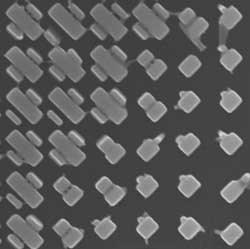 Researchers have developed a polarization-insensitive metalens that can achromatically focus light across the visible spectrum without aberrations. This flat lens could be used for everything from virtual or augmented reality headsets to microscopy, lithography, sensors, and displays.
Researchers have developed a polarization-insensitive metalens that can achromatically focus light across the visible spectrum without aberrations. This flat lens could be used for everything from virtual or augmented reality headsets to microscopy, lithography, sensors, and displays.
Jan 21st, 2019
Read more
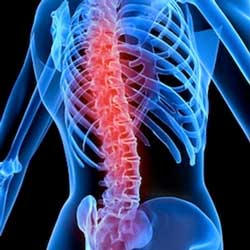 The ByAxon project is developing a new implant that restores the transmission of electrical signals in an injured central nervous system.
The ByAxon project is developing a new implant that restores the transmission of electrical signals in an injured central nervous system.
Jan 21st, 2019
Read more
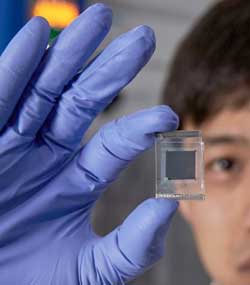 A recent study has presented a new class of solar cells, using lead-free perovskite materials.
A recent study has presented a new class of solar cells, using lead-free perovskite materials.
Jan 21st, 2019
Read more
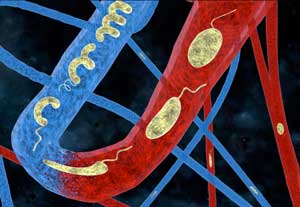 Scientists have developed tiny elastic robots that can change shape depending on their surroundings. Modeled after bacteria and fully biocompatible, these robots optimize their movements so as to get to hard-to-reach areas of the human body. They stand to revolutionize targeted drug delivery.
Scientists have developed tiny elastic robots that can change shape depending on their surroundings. Modeled after bacteria and fully biocompatible, these robots optimize their movements so as to get to hard-to-reach areas of the human body. They stand to revolutionize targeted drug delivery.
Jan 19th, 2019
Read more
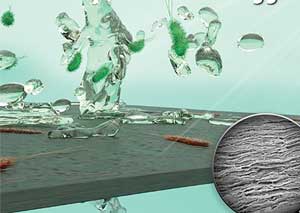 Engineers have created a bacteria-filtering membrane using graphene oxide and bacterial nanocellulose. It's highly efficient, long-lasting and environmentally friendly - and could provide clean water for those in need.
Engineers have created a bacteria-filtering membrane using graphene oxide and bacterial nanocellulose. It's highly efficient, long-lasting and environmentally friendly - and could provide clean water for those in need.
Jan 19th, 2019
Read more
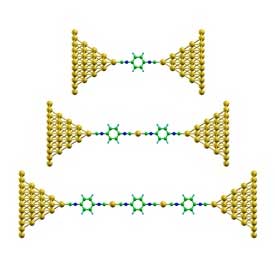 A research team has succeeded in producing molecules between two microscopically small, movable gold tips - in a sense as a 'hand-knitted' unique specimen. The properties of the molecules can be monitored in real time while they are being produced.
A research team has succeeded in producing molecules between two microscopically small, movable gold tips - in a sense as a 'hand-knitted' unique specimen. The properties of the molecules can be monitored in real time while they are being produced.
Jan 18th, 2019
Read more
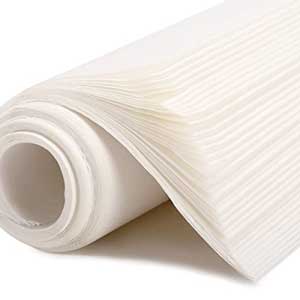 Researchers have developed a new kind of 'fire-resistant Xuan paper' based on ultralong hydroxyapatite nanowires.
Researchers have developed a new kind of 'fire-resistant Xuan paper' based on ultralong hydroxyapatite nanowires.
Jan 18th, 2019
Read more
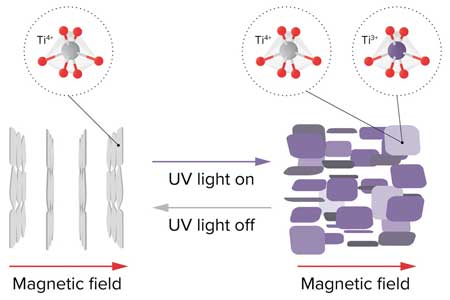 Light induces photoreactions that activate the switch of the magnetic orientation of 2D materials dispersed in water.
Light induces photoreactions that activate the switch of the magnetic orientation of 2D materials dispersed in water.
Jan 18th, 2019
Read more
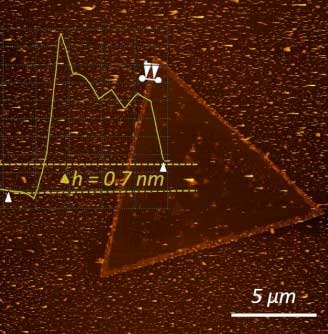 A research group has released the open-source design of a chemical vapor deposition (CVD) system for two-dimensional (2D) materials growth, an advance which could lower the barrier of entry into 2D materials research and expedite 2D materials discovery and translation from the benchtop to the market.
A research group has released the open-source design of a chemical vapor deposition (CVD) system for two-dimensional (2D) materials growth, an advance which could lower the barrier of entry into 2D materials research and expedite 2D materials discovery and translation from the benchtop to the market.
Jan 18th, 2019
Read more
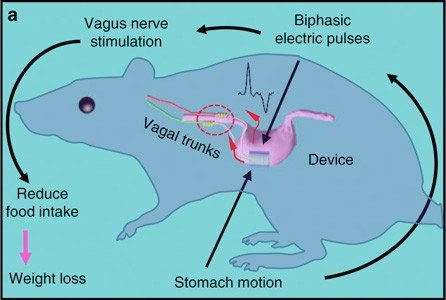 Bioengineers have developed implantable and wearable nanogenerators from special materials that create electrical pulses when compressed by body motions. The pulses controlled weight gain and enhanced healing of skin wounds in rat models.
Bioengineers have developed implantable and wearable nanogenerators from special materials that create electrical pulses when compressed by body motions. The pulses controlled weight gain and enhanced healing of skin wounds in rat models.
Jan 17th, 2019
Read more
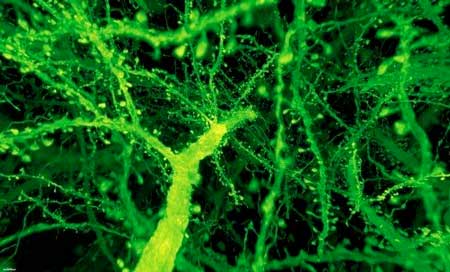 A powerful new technique combines expansion microscopy with lattice light-sheet microscopy for nanoscale imaging of fly and mouse neuronal circuits and their molecular constituents that's roughly 1,000 times faster than other methods.
A powerful new technique combines expansion microscopy with lattice light-sheet microscopy for nanoscale imaging of fly and mouse neuronal circuits and their molecular constituents that's roughly 1,000 times faster than other methods.
Jan 17th, 2019
Read more
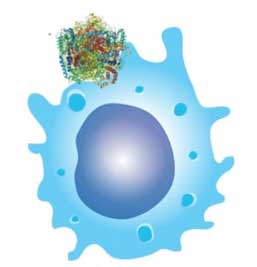 Scientists have introduced a novel targeted drug delivery system that can improve the pharmacological and therapeutic properties of conventional cancer treatments.
Scientists have introduced a novel targeted drug delivery system that can improve the pharmacological and therapeutic properties of conventional cancer treatments.
Jan 17th, 2019
Read more
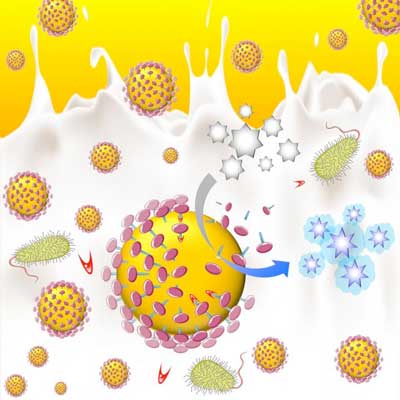 Researchers have developed a highly innovative new enzyme biomarker test that has the potential to indicate diseases and bacterial contamination saving time, money and possibly lives.
Researchers have developed a highly innovative new enzyme biomarker test that has the potential to indicate diseases and bacterial contamination saving time, money and possibly lives.
Jan 17th, 2019
Read more
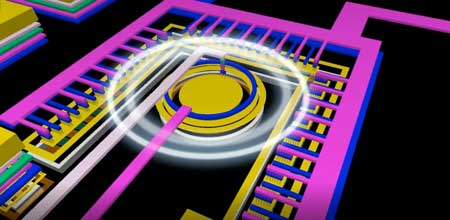 For the first time, researchers succeeded in connecting two parts of an electronics chip using an on-chip optical link.
For the first time, researchers succeeded in connecting two parts of an electronics chip using an on-chip optical link.
Jan 17th, 2019
Read more
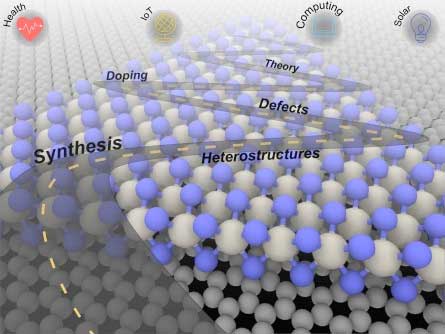 A roadmap for 2D materials explores the challenges of synthesizing electronic grade materials.
A roadmap for 2D materials explores the challenges of synthesizing electronic grade materials.
Jan 17th, 2019
Read more
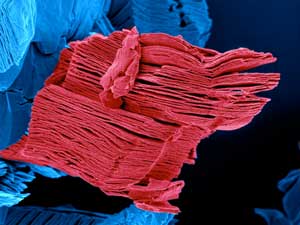 Researchers have discovered that 2-D titanium carbide materials, or MXenes, can react with water without the presence of other oxidizers. Their finding may lead to new insights into the unusual chemistry of MXenes and consequently, have impacts on MXenes' storage and device manufacturing.
Researchers have discovered that 2-D titanium carbide materials, or MXenes, can react with water without the presence of other oxidizers. Their finding may lead to new insights into the unusual chemistry of MXenes and consequently, have impacts on MXenes' storage and device manufacturing.
Jan 17th, 2019
Read more
 Researchers have developed a polarization-insensitive metalens that can achromatically focus light across the visible spectrum without aberrations. This flat lens could be used for everything from virtual or augmented reality headsets to microscopy, lithography, sensors, and displays.
Researchers have developed a polarization-insensitive metalens that can achromatically focus light across the visible spectrum without aberrations. This flat lens could be used for everything from virtual or augmented reality headsets to microscopy, lithography, sensors, and displays.















 Subscribe to our Nanotechnology News feed
Subscribe to our Nanotechnology News feed